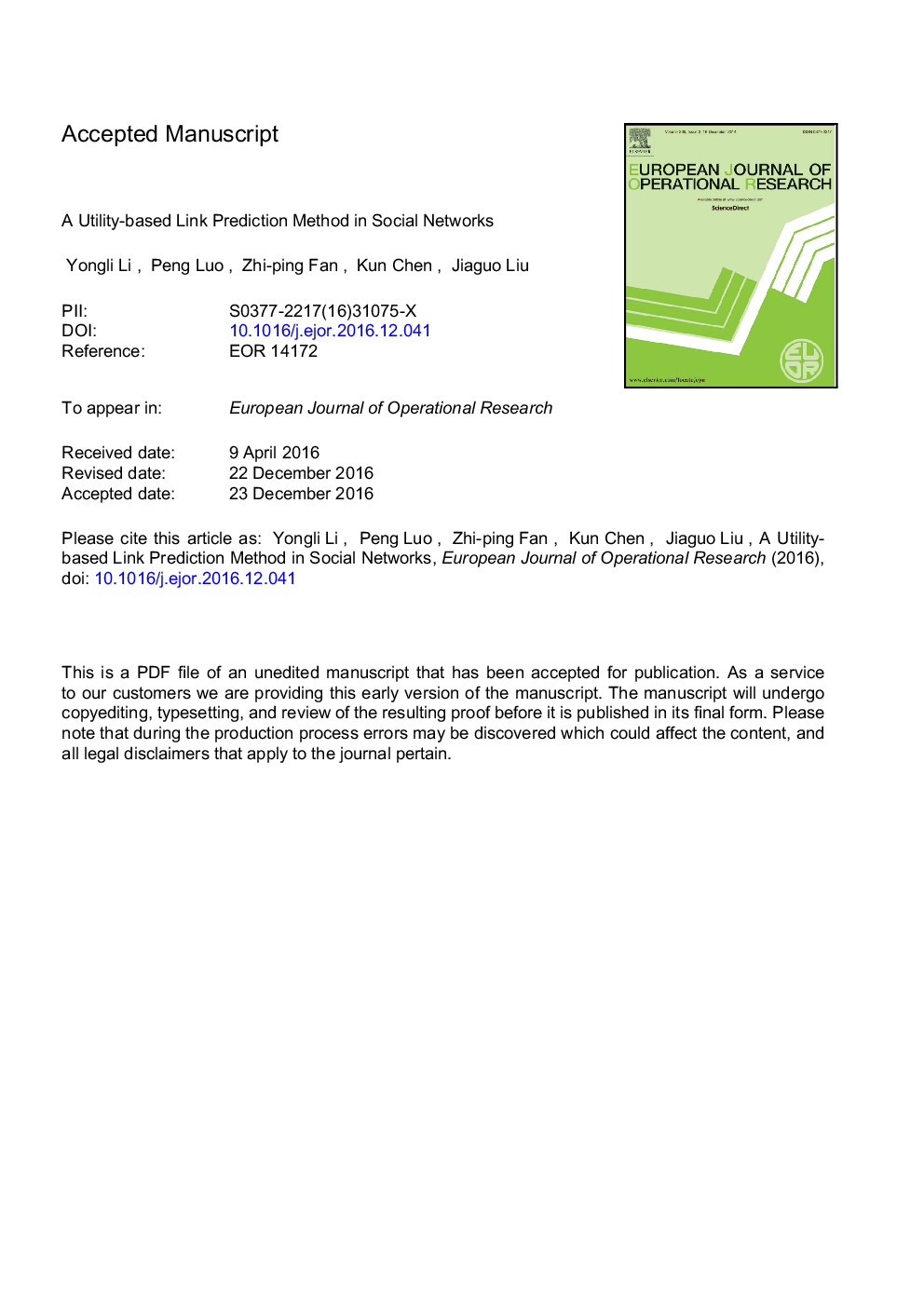| Article ID | Journal | Published Year | Pages | File Type |
|---|---|---|---|---|
| 4959860 | European Journal of Operational Research | 2017 | 28 Pages |
Abstract
Link prediction is a fundamental task in social networks, with the goal of estimating the likelihood of a link between each node pair. It can be applied in many situations, such as friend discovery on social media platforms or co-author recommendations in collaboration networks. Compared to the numerous traditional methods, this paper introduces utility analysis to the link prediction method by considering that individual preferences are the main reason behind the decision to form links, and meanwhile it also focuses on the meeting process that is a latent variable during the process of forming links. Accordingly, the link prediction problem is formulated as a machine learning process with latent variables; therefore, an Expectation-Maximization (EM, for short) algorithm is adopted and further developed to cope with the estimation problem. The performance of the present method is tested both on synthetic networks and on real-world datasets from social media networks and collaboration networks. All of the computational results illustrate that the proposed method yields more satisfying link prediction results than the selected benchmarks, and in particular, logistic regression, as a special case of the proposed method, provides the lower boundary of the likelihood function.
Related Topics
Physical Sciences and Engineering
Computer Science
Computer Science (General)
Authors
Li Yongli, Luo Peng, Fan Zhi-ping, Chen Kun, Liu Jiaguo,
